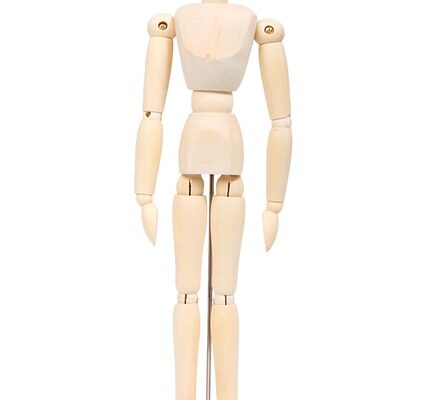Pilates may be right for you if you want to focus on your core strength and improve your posture. Pilates can help you move more effectively by preparing your body to maintain optimal alignment or better posture.
This helps to stimulate your powerful muscles, which include the abdominals, pelvic floor, lower back, and glutes. The powerhouse also aids with overall bodily stability.
Pilates’ core concepts include centering, control, precision, focus, breath, and flow, which together foster a connection and awareness between your mind and body. Your posture should improve as your awareness of how you move improves. Continue reading to discover the benefits of excellent posture and exercises to help you stand higher.
The Advantages of Good Posture
Aside from the increased self-esteem that comes with standing a little taller, good posture can also enhance the way your clothes fit, how you perform during workouts, and how you breathe. Here are some more advantages of excellent posture.
Pain and strain are reduced.
Improved posture can minimize organ pressure and compression, which is essential for living a pain-free life. One study discovered that gains in postural awareness were associated with decreased pain in patients suffering from spine and shoulder injuries. In summary, when your body is in good form, and your joints are aligned, you are less likely to experience pain from unneeded strain.

Encourages Efficient Movement
Pilates can help you improve your balance and stability by recruiting the muscles that promote optimum posture, particularly the core. By encouraging good spinal and joint alignment, you can not only enhance your movement but also potentially expand your mobility. This, in turn, can help with flexibility—all of which are important considerations in moving efficiently.
Prevents injury during exercise
Efficient mobility is critical for avoiding injury during exercise, and it is heavily influenced by posture. For example, when jogging, excessive forward flexion might modify your stride and place undue strain on your joints.
Of course, everyone’s forward lean is different, and you must find what works best for you. Overall, proper posture is essential for keeping your joints and muscles safe during activity and, more critically, avoiding injuries.
Posture-Benefitting Pilates Exercises
There are several exercises that, with practice, encourage good posture and may be included in your training regimen or added to a stretch session. Laura Wilson, celebrity trainer and Natural Pilates founder/CEO, recommends following four Pilates exercises to improve your posture.
Protraction and Retraction of the Scapula
At the shoulder (glenohumeral) joint, the scapula, a strong triangular-shaped bone on your upper back, connect with the humerus. This bone, which has six ranges of motion, is important in ensuring healthy postural alignment.
Scapular protraction and retraction can help you find neutral scapular and thoracic alignment and strengthen the muscles surrounding the shoulder blades.
Here is the step-by-step instruction on how.
- Maintain a lofty posture with your shoulders rolled back.
- Bring your arms forward, palms facing each other.
- Squeeze your shoulder blades together for three counts before releasing them.
- Maintain proper posture by keeping your shoulders down.
Repeat for 1 to 2 minutes, 2 to 3 times. As you become acquainted with the action, practice this movement in front of a mirror so you can keep an eye on your form and shoulder alignment.
Free Weight Chest Expansion
Tight chest muscles might cause you to hunch unconsciously, affecting mobility in your mid back and breathing efficiency. An imbalance can be corrected with exercises that open up your chest.
Chest expansion exercises improve posture and spinal alignment by strengthening the scapular retractors.
You can increase the difficulty by using light free weights.
Here’s how to incorporate chest expansions into your training program.
- Place yourself in a standing or kneeling position.
- Exhale by pulling both arms back and maintaining them straight. This will allow you to fully open your chest.
- Hold for 3 seconds before returning to the beginning position by drawing your shoulder blades down and together.
Set a goal of 10 sets and two to three rounds. You should also be careful of activating your core (drawing your tummy in towards your spine) at the same moment to improve your stability and protect your lower back.
Prone Back Extension
This exercise promotes appropriate posture by engaging muscles throughout your spine as well as shoulder stabilizers. In fact, studies have shown that exercise interventions targeting the reinforcement of back muscles are effective in improving posture.
We spend hours rounded over desks and steering wheels, and activities that encourage spinal extension are better to offset so much flexion in your day-to-day.
This is how to perform the back extension.
- Lie on your stomach with your legs shoulder-width apart.
- Bend your arms to lay your hands flat against your shoulders (like in Cobra yoga) or reach them long and forward (think Superman).
- Exhale first, then inhale and stretch your spine and lift your chest off the mat (to your comfort level), holding for three counts.
- To preserve your lower back, keep your abs and glutes activated before slowly returning to the beginning position.
Work your way up to 10 reps for three rounds. Because the back extensor muscles are frequently ignored, you may experience tightness or restriction of mobility in this area. Concentrate on your breathing and take your time performing slow and fluid motions to protect your lower back from harm.
Single Arm Quadrupet rotation
The quadruped rotation is fantastic for opening up your chest, which functions as a corrective movement that encourages mobility to your mid-back and spinal muscles, which aid in postural alignment.
This exercise works the upper back and shoulder muscles while also stretching the front of the chest, all of which are important components of good posture.
Hold a free weight for an added challenge.
Here’s how to perform a quadruped single-arm rotation.
- Begin on all fours, knees under hips, hands under shoulders.
- To begin, take a deep breath.
- Exhale by reaching one arm back straight toward your hip.
- To open your chest, rotate your spine.
- Take a look at your hand.
Perform 2 to 3 sets of 10 reps on each side. Throughout, maintain your core engaged and check that your knees and hands are appropriately stacked under your hips and shoulders.
The Effects of Breathing on Posture
Good posture relieves diaphragm compression and allows you to breathe more efficiently. Meanwhile, poor posture might limit rib cage expansion and diaphragm range of motion, causing breathing to become difficult.
Good posture allows you to take full, deep breaths and fill your lungs.
Experts recommend thinking about using the gut and deep abdominal core muscles, particularly the transverse abdominis (TA), to help with respiration. Pilates breathing can help you with this. To activate your TA, inhale through your nose and exhale through pursed lips (like blowing out a candle).
This wraps around the waist like a corset from the ribs to the hips. In Pilates, every breath is like a tiny belly exercise, which translates to stronger and better posture.
Other Techniques for Improving Posture
Mindfulness is one of the most effective techniques to improve posture. This is especially crucial if you spend a lot of time sitting.
Check in at your desk, automobile, or grocery store queue, and take time to scan your posture in the mirror when getting dressed in the morning.
This awareness and habit-forming activity can assist you in making the required changes to retrain your body’s alignment. You can also utilize a stability ball as your office chair, which requires you to work your abs to keep from slouching.
Many companies now provide standing workstations, which can enhance posture mindfulness or even split your day between standing and sitting and integrate brief intervals to move about.
To Conclude
Posture impacts not just your form but also your respiration. Therefore it’s critical to pay attention to it. Sitting at a desk, looking down at your phone, or simply general slouching can all have an influence on your posture, causing unnecessary tension and strain on your back and other regions.
Incorporating frequent exercise and postural stretching into your daily routine can help to reduce stress and develop mindfulness in your behavior. However, if neck or back pain persists, consult a healthcare physician for a treatment plan.


